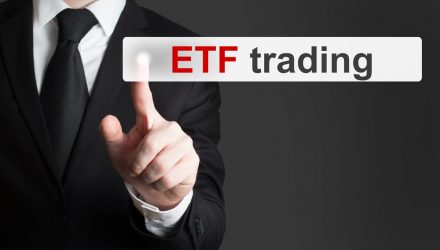ETFs have all sorts of well-documented advantages, from tax flexibility to transparency, but the wrapper has other strengths, too. One such benefit is how the ETF vehicle can protect investors from bearing the brunt of the spreads in the ETF’s underlying holdings. As recently brought up on FinTwit by Bloomberg senior ETF analyst Eric Balchunas in collaboration with colleague James Seyffart, ETF trading spreads can compare well to the trading spreads of the stocks held within a given ETF.
Nice table showing ETF spread vs the spread of trading the basket, this big reason why the super-liquid veteran ETFs are so beloved by trading crowd despite their higher fees. This is not an easy table to make but @JSeyff went the extra mile for his $LQD primer. pic.twitter.com/AiHAdNd3Vc
— Eric Balchunas (@EricBalchunas) April 5, 2023
ETFs aren’t just handy options to package indexed or actively managed holdings tied to a theme or a factor in one place. For the most liquid ETFs like the SPDR S&P 500 Trust ETF (SPY), bid/ask spreads become remarkably tight, with much less of a cost compared to the spreads found in individual stocks, especially those stocks that are impacted by market volatility.
Calculating a bid/ask spread, or the difference between the highest price a buyer will pay for a stock or ETF and the lowest price a seller would accept, is a key part of not only investing overall but also investing in ETFs. Spreads are determined by factors like the aforementioned liquidity in addition to, of course, supply and demand.
See more: “Tools for Advisors: Maximize Your ETF Trading”
Certainly, individual stocks have seen spreads narrow since the “decimalization” of 2001, but when taking together both the aggregate spreads of all holdings in an ETF and then weighting them according to the weight that holding has in the ETF overall, those costs can add up as seen above.
Instead of separately trading for and eating the cost of, say, sixty stocks’ worth of bid/ask spreads totaling sometimes more than 100 basis points (bps), an ETF allows investors to make one trade for less than 10bps of spread costs.
Knowing how an ETF invests is one thing – but knowing why they’re so popular and how they operate at a fundamental level as a wrapper is key. For those investors and advisors who may curious about ETF use cases, using ETF trading spreads to mitigate the cost of their holdings is certainly one good reason to consider the vehicle.
For more news, information, and analysis, visit the Core Strategies Channel.


